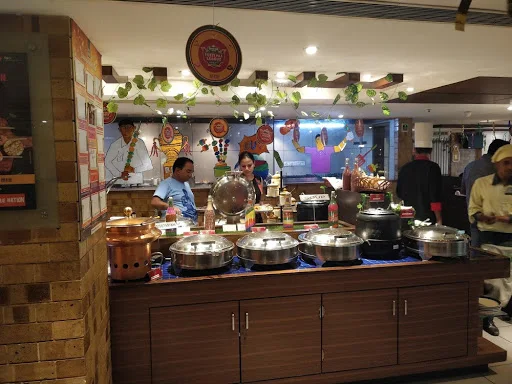Punjab
WELCOME TO Punjab
State Overview
Chandigarh
50,362 km2
30.4 million
Punjabi

Popular
Geography and Tourist Attractions
Information about the state's tourist attractions, including popular destinations, events, and activities.

Golden Temple, Amritsar

Wagah Border, Amritsar

Jallianwala Bagh, Amritsar
Political
Economy and Government
The state of Punjab in India boasts a robust economy driven by agriculture, industry, and services. Known as the "Granary of India," Punjab is renowned for its agricultural productivity, particularly in wheat and rice cultivation. The state's fertile soil, coupled with advanced irrigation systems, has contributed to its success in agricultural production.
In addition to agriculture, Punjab has a strong industrial base. The state is a leader in manufacturing sectors such as textiles, machinery, auto parts, and food processing. Industrial hubs like Ludhiana and Jalandhar have emerged as prominent centers for small-scale industries and export-oriented manufacturing.
The government of Punjab has implemented various initiatives to support economic growth and development. It has focused on infrastructure development, including improving road networks, expanding irrigation facilities, and enhancing power supply. The government has also encouraged investment in sectors like information technology, healthcare, and renewable energy.
Moreover, Punjab has witnessed the rise of the service sector, with a notable presence in sectors such as education, healthcare, hospitality, and tourism. The state has invested in developing tourist attractions, including religious sites, historical monuments, and cultural festivals, to promote tourism and boost the local economy.
The government of Punjab plays a crucial role in providing governance, infrastructure, and public services to its residents. It has implemented social welfare programs, focused on education, healthcare, and rural development, to improve the standard of living for its citizens.
Overall, the economy and government of Punjab are committed to fostering growth, attracting investments, and providing a conducive environment for businesses to thrive. With its strong agricultural base, expanding industries, and government support, Punjab continues to make significant strides in its economic development.

History
History and Culture
Punjab, situated in northern India, has a rich history and vibrant culture that span centuries. The region has been a cradle of ancient civilizations and has witnessed the rise and fall of various dynasties.
Historically, Punjab has been a significant crossroads for trade and cultural exchange. The state has seen the influence of various empires, including the Mauryas, Guptas, Mughals, and British. This diverse historical background has contributed to the cultural tapestry of Punjab.
Punjab is renowned for its warm hospitality and spirited folk traditions. Bhangra, a lively and energetic dance form, along with traditional folk music, captivates audiences with its rhythmic beats and infectious melodies. The folk traditions depict the region's agricultural heritage, love stories, and social celebrations.
Sikhism, founded in the 15th century, holds a special place in Punjab's history and culture. The state is home to numerous gurudwaras (Sikh temples), including the iconic Golden Temple in Amritsar. Sikh festivals such as Guru Nanak Jayanti and Baisakhi are celebrated with great fervor and attract devotees from around the world.
Punjab's cuisine is famous for its rich flavors and hearty dishes. From buttery makki di roti (cornbread) and sarson da saag (mustard greens) to succulent tandoori chicken and lassi (a traditional yogurt-based drink), the culinary delights of Punjab reflect the region's agricultural abundance.
The history and culture of Punjab have shaped the identity and values of its people. The state takes pride in preserving its cultural heritage while embracing modernity. Festivals, music, dance, and cuisine play an integral role in showcasing Punjab's vibrant history and cultural legacy to the world.
HOTELS

Taj Swarna, Amritsar

Hyatt Regency Ludhiana

Radisson Blu Hotel Amritsar
RESTAURANTS

Kesar Da Dhaba, Amritsar

Pal Dhaba, Chandigarh

